
For 1966-1970 Plymouth and Dodge B-bodies there were three basic rear end assemblies that were available: the 8¼, the 8¾, and the 9¾ Dana 60. It is relatively easy to determine which axle your car currently has and then determine which one it was equipped with from the factory. The small block cars almost always came equipped with an 8 ¼ rear end assembly. The big block cars came with the 8¾ with only the high performance options using the 9¾ Dana that was virtually indestructible.
All of these rear ends have several different gear ratios available and could either be “open” meaning only one tire would grip at a time or it would have a “Sure Grip” so that both tires gripped upon acceleration. The 3:23 gears in the 8¾ and the 3:54 gears in the 9¾ Dana 60 were standard with several optional gears that can be used based upon your desired performance level and how you actually want your car to drive when the restoration is completed.
Top left: The Dana 60 rear end is easily identified with just a glance. The access to the gears is through a cover that faces the rear of the car. The axle tubes are larger and the entire unit is heavier and therefore practically indestructible. This unit has been blasted and primed before being sent to a shop that has the equipment to correctly restore this unit. By blasting and priming the unit before it is rebuilt you insure that the glass beads and paint will not get into the unit. Top right: The Dana 60 comes standard with the 11inch larger drum brakes and also a larger backing plate. Upon close inspection this axle has a broken wheel stud that needs to be replaced. This is common since the studs on the driver’s side are left handed threads and often broken off by those who are not familiar with these models and years. Bottom left: After the unit is rebuilt it is painted gloss black and the rebuilt spring assemblies are installed. The passenger side springs on the Dana 60 have two more springs than the driver’s side. Bottom right: To the untrained eye this rear looks like a Mopar Dana 60. But in reality it is a Ford unit. Be sure and check the internals and do not get fooled by the similarities of these tow rear axles.
It is strongly recommended for any high performance applications that if you have a 9¾ Dana 60, that you not attempt to rebuild the gears yourself. It is the most difficult to rebuild of all the rear ends and demands the most expensive tools to rebuild correctly. The case spreader alone is over $600. Since the 8¾ is by far the most popular and available rear end, the step by step rebuild of the center section or “chunk” will be covered. The tools needed to perform this rebuild are expensive and the expertise and experience needed to correctly rebuild your “chunk” require most owners to rely on a good reputable shop to perform the work. If you have access to the tools needed you can tackle this job by following these guidelines.
Above left: In an 8 ¾ rear axle the gears are all contained in a center unit unlike the Dana 60 unit. Usually it has the 489 case and the date code is cast into the side of the case. There is also a metal tag tells the gear ratio in the axle. You can see the “91” for a 3:91 gear ratio in this unit. Above center: The first step in rebuilding the 8¾ axle is to remove the bolts that hold the axles in the unit. There is a hole that allows you to remove the nuts by rotating the axle so the access hole lines up with the bolt. This plate is sealed and the axle bearing is pressed on the axle shaft behind the plate. Once the plate nuts are removed you can pull the axles out of the unit with a slide puller. You will be able to see the rear axle seal inside the axle tube once the axle is removed. Above right: Remove the drive shaft by taking off the universal joints, sliding the shaft forward into the transmission. Once it clear the rear yoke slide the drive shaft out. If these is any transmission fluid in the transmission it will leak out when the drive shaft is removed.
Top left: If you take care when you clean your original rear end you may be able to see at least the remnants of the original inspection marks. Here you can see the three white paint splotches identifying the pinion size and the gears. In this 489 case it is 3:91 gears and a 1 7/8 pinion. There is also a yellow stamp 10 22 which is the assembly date of the center section. Top right: Here you can see a pink long inspection mark along with a short yellow swipe and a yellow circle. Not every rear will have these marks so it is important to document and reproduce what you find on your own suspension. Bottom left: The orange spot of paint on the filler access hole is consistent on cars that has a sure grip installed. It was to confirm that the additive was indeed added. Bottom right: On the back of the axle tube a kind of backwards white “6” is seen. This mark can also be on the rounded part of the center of the axle.
Above left: There are several quick white swipes at various places where various parts were attached like this one showing that the shock/spring plate was tight and torqued correctly. Above right: There will be a “stenciled” yellow set of two numbers on the driver’s side of the axle tube on the front side. Here the ”077” corresponds with the build sheet showing this is a 3:91 gear rear end. Under this code there will be a final axle assembly date code that will be very close to the center section assembly date. Here is a 10-24W which is 2 days after the center section assembly date code.
Above left: Even the bolts that secure the universal joint strap have a unique head marking. On this untouched set of bolts there are two different head markings but both are used in this application. The assembly worker didn’t stop to match the heads of the bolts. Above right: Here is a comparison of an original set of “U” joint straps and a replacement pair. Notice the correct “date code” and the “H” stamped into the straps. Reproductions do not have these markings.
Above left: Here is a completely rebuilt center section that was not painted and was natural metal. Unless you treat paint this it will rust. Above center: The drive shaft has been blasted, the universal joints have been replaced and it has been painted with Seymour’s Stainless Steel Paint. The last coat is fogged so it looks more like natural steel. This four speed unit has the extra heavy duty collar. Above right: The finished center section is also painted with Seymour’s with extra care given to make sure the gears do not get any overspray.
Above left: Install the center section using either a gasket or black silicone sealer but not both. Torque down the bolts to specifications. Above right: After pressing on new axle bearings and replacing the axle tube seal insert the axles. On the right side there is an adjuster. You should tighten it according to the shop manual making sure the correct axle play is achieved. Rebuild the drum brakes following the guide provided in that section and install the freshly turned drum. This car had steel wheels and dog disc hub caps so the surface of the drum is not painted red.









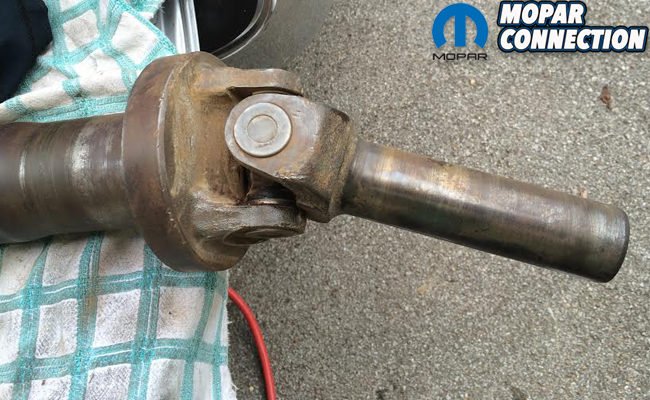

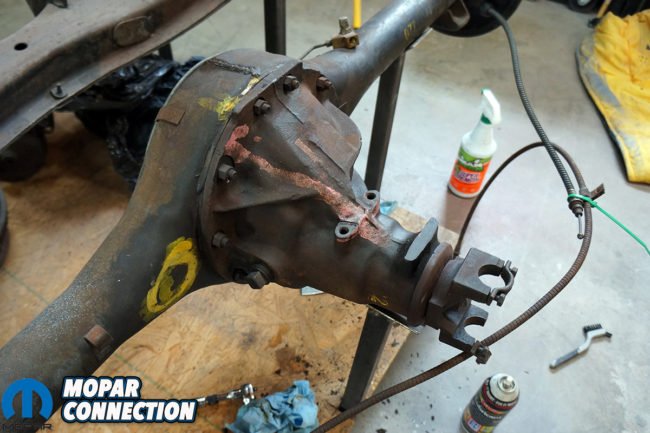


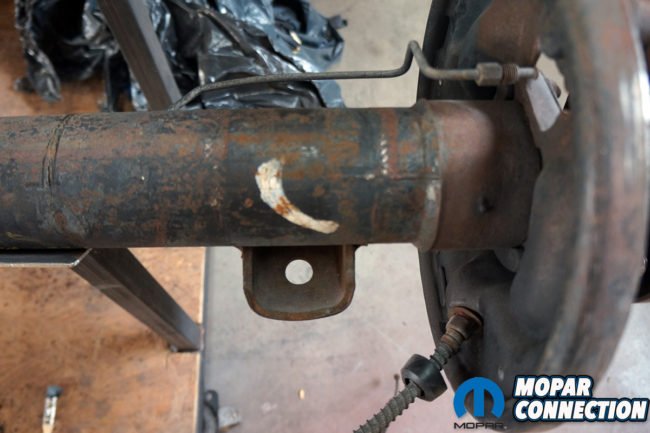



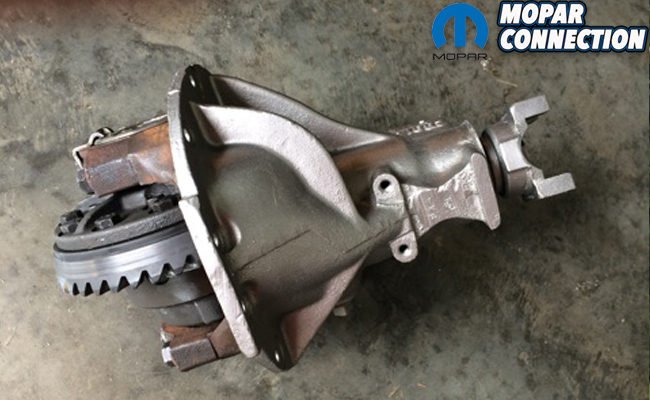

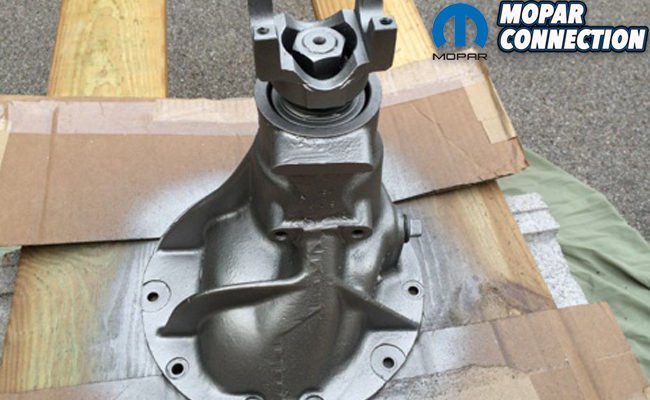
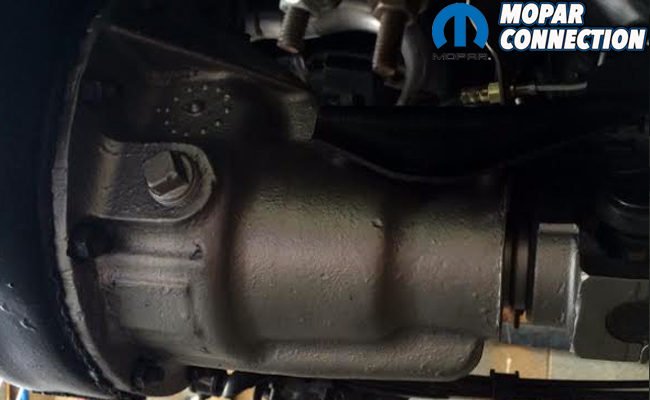

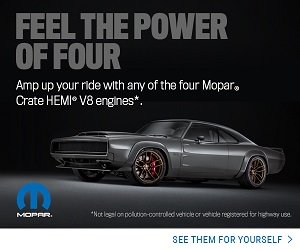




hi, i think i have a 8.75 rearend, but it has a back inspection plate and drum hubs and stubber on hog head. got any guess
That sure doesn’t sound like a 8.75.
I have a 1969 Dodge Coronet that I’ve been restoring now for 25 years. I am almost done. I have an 8.75 differential. I hear a howling sound at the rear end. It sounds like my pinion bearing is going out, but I’m not sure. Could you recommend me to a rear end specialist that is familiar with these Mopar cars, within a 50 mile radius Upland, CA 91786.
LOL. No, you’re going to want to Google that or reach out to a local group.
I will buy your 8-3/4? I need one for my 1966 Charger or if you know where I can get an 8-3/4 out of a 1966 Charger?
Check rear diff fluid befor taking it anywhere, maby just low ,happens a lot with older veh